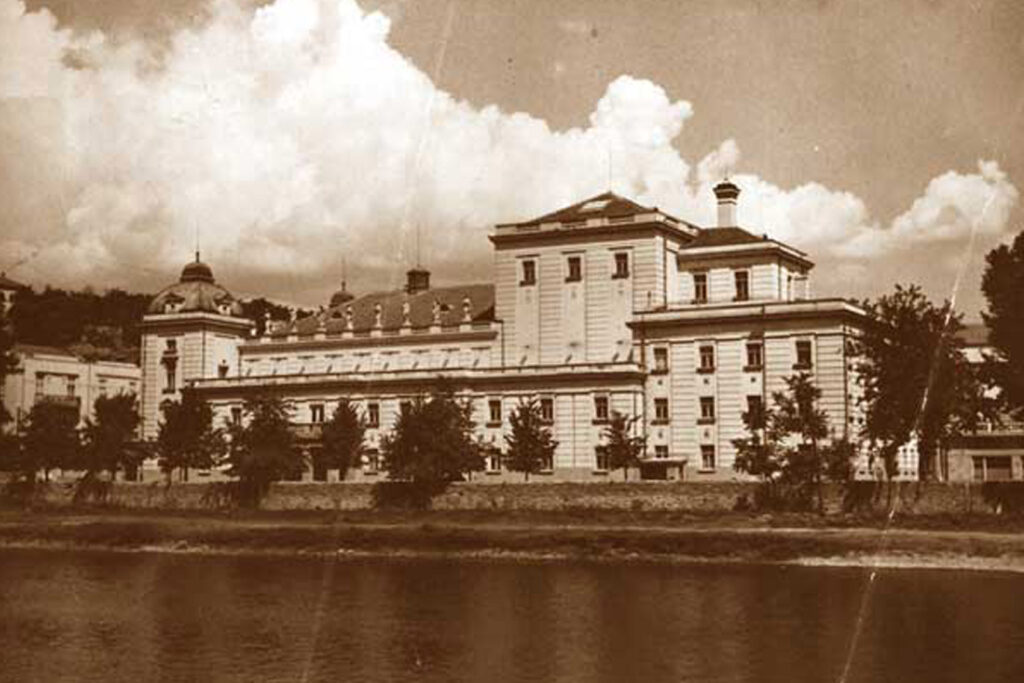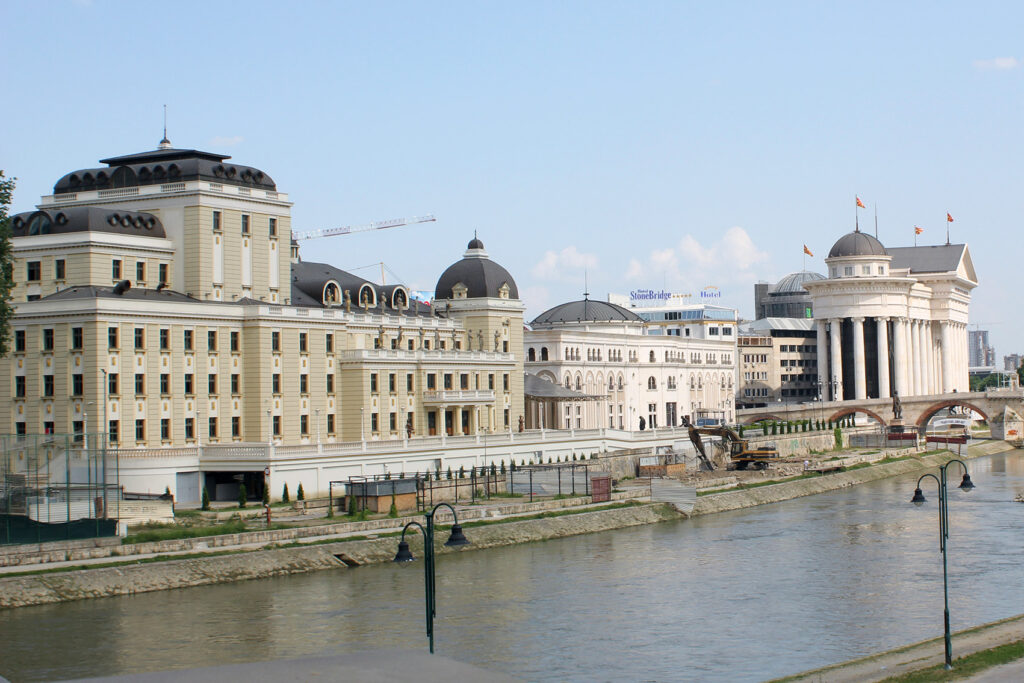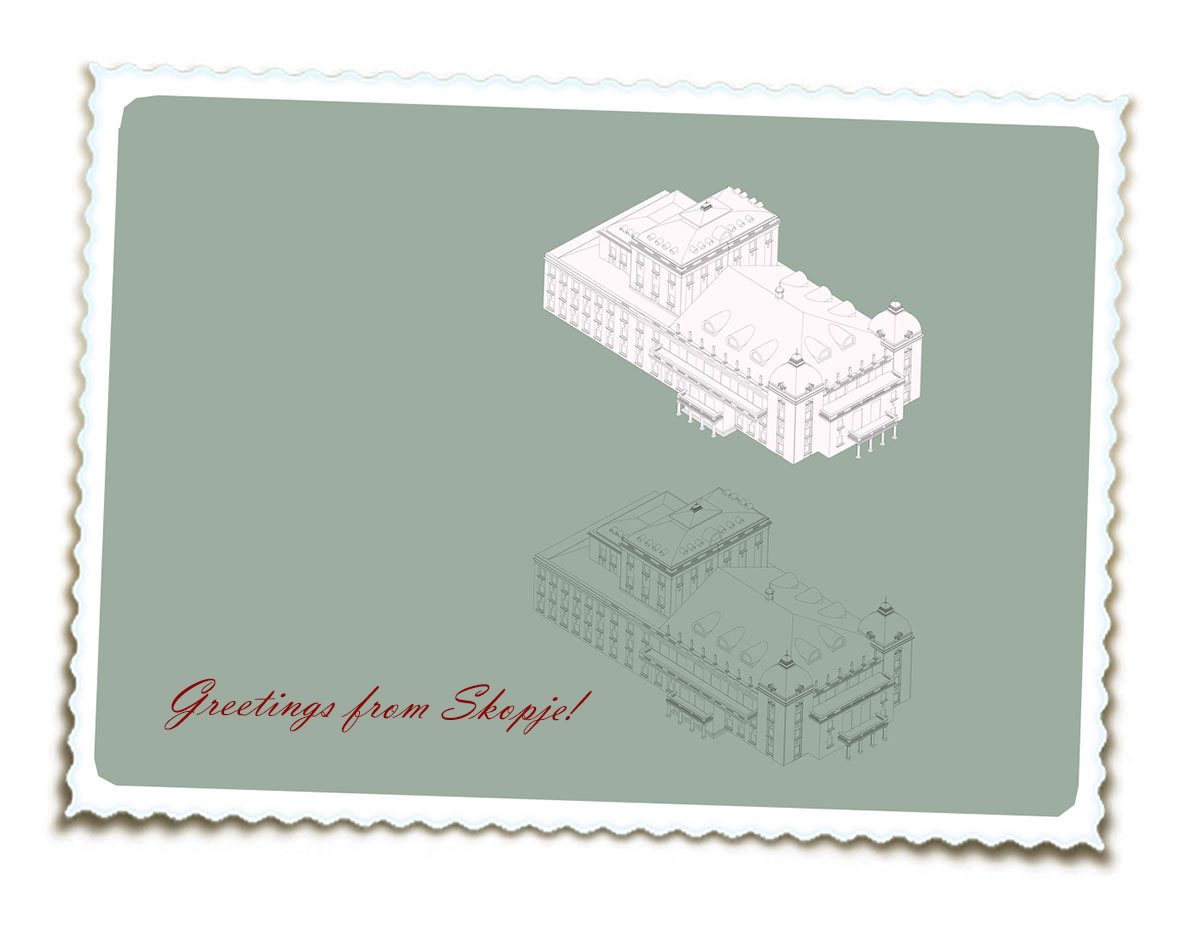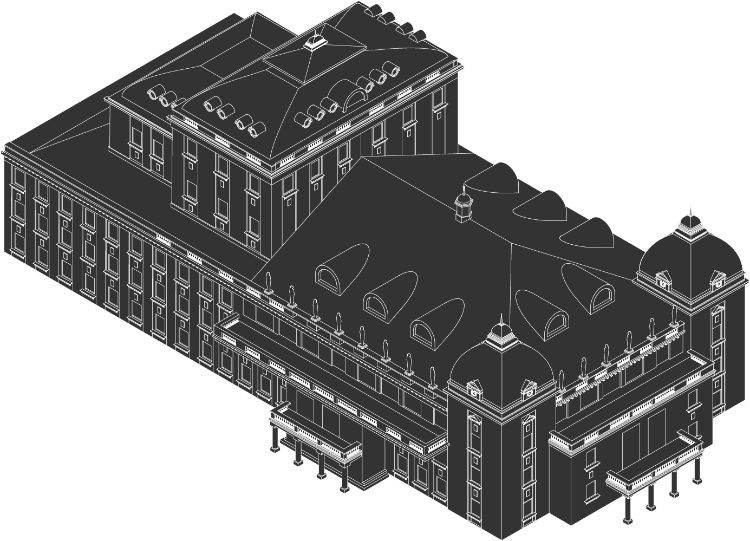Dimitrie M. Leko
1927
Destroyed in an earthquake
1963
Reconstruction
Jovan Stefanovski – Zhan
2013


Next to the new Museum of the Macedonian Struggle for Sovereignty and Independence, built in 2011 by Zoran Jordanovski also as part of Skopje2014, is the building of the new Old Theater.
The newly reconstructed building of the Old National Theater was designed by Jovan Stefanovski – Zhan and was opened in 2013. It is an example of revival of an old urban artefact of the city, destroyed in the bug earthquake of 1963. There is a gap of fifty years between its destruction and resurrection. This reconstruction is also part of Skopje2014. The original National Theater building was built in 1927, on this exact same location. The project was started in 1914 by J. Bukovac and went through many redesign processes until it was finally finished by Dimitrie Leko, the architect who also designed the first post-ottoman urban plan of Skopje. The theater was an example of classical academism, being one of the few buildings from the first modernization period that followed the European eclectic production. Architecturally, it was well known for its interiors. Its relief ornaments were a great achievement of the local craftsmanship of the time.
The reconstructed building of the theater also contains a museum of ornaments. Its interiors are filled with ornament samples brought from all over the country and fragments and iconostasis taken from different archaeological localities in Macedonia are showcased. The interior of the theater itself has become a museum on its own.
Two other examples of this period are the Army Hall and the National Bank, both destroyed in the earthquake in 1963 and both reconstructed in the last five years. All of the tree reconstructions have a different approach in forming a memory connection with their long-gone originals. In the case of the Old Theater we are speaking about a more accurate copy of its original, than the National Bank reconstruction, but not as accurate as the Army Hall reconstruction. Its volume has been mirrored, turning the entrance of the building to face the Stone Bridge and its scale has also been slightly emphasized.
The reconstruction is focusing on reviving the architectural style of the building, but it is altering other aspects of the architecture. This is showing the use of the image for ideological purposes by the Skopje2014 project. The project is not reviving the theater’s architecture but the image of it, with the aim of producing longing for those past times. This architecture originates from a period in time that is an antecedent of the time from which all of the modified buildings originated.
To conclude, the reconstructed theater, in its revival of the old one, is accurate only in the style of the building and not in the entire architecture of it. Putting the accent on the image, its purpose is to produce nostalgia for the past of its original, giving priority to chosen segments of history.

